Hong kong airport – Hong Kong International Airport (HKG) stands as a shining beacon in the heart of Asia, connecting the East and West with unparalleled efficiency and grandeur. From its humble beginnings to its current status as a global aviation hub, HKG has played a pivotal role in shaping the region’s economic and social landscape.
With state-of-the-art infrastructure, world-class amenities, and a strategic location, HKG has become a preferred destination for travelers and airlines alike. Its commitment to sustainability and innovation ensures that it remains at the forefront of the aviation industry, continuously striving to enhance the passenger experience and drive economic growth.
Airport Overview
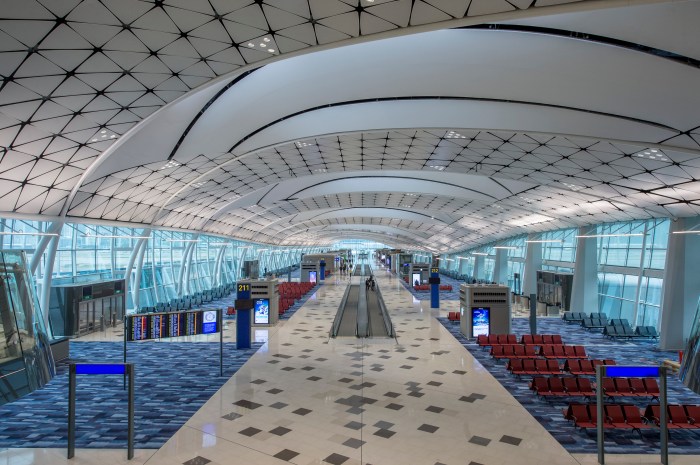
Hong Kong International Airport (HKG) is one of the busiest and most important aviation hubs in Asia, serving as a gateway to both the region and the world.
HKG was established in 1998, replacing the former Kai Tak Airport. Since then, it has undergone several expansions and renovations to meet the growing demand for air travel. In 2019, HKG handled over 75 million passengers and 4.8 million tons of cargo, making it the world’s eighth-busiest airport by passenger traffic and the fourth-busiest by cargo traffic.
History of HKG
- 1998:HKG opens, replacing Kai Tak Airport.
- 2007:Terminal 2 opens, increasing the airport’s capacity to 45 million passengers per year.
- 2012:HKG’s third runway opens, making it one of the few airports in the world with three parallel runways.
- 2018:The Midfield Concourse opens, connecting Terminals 1 and 2 and increasing the airport’s capacity to 100 million passengers per year.
Infrastructure and Facilities
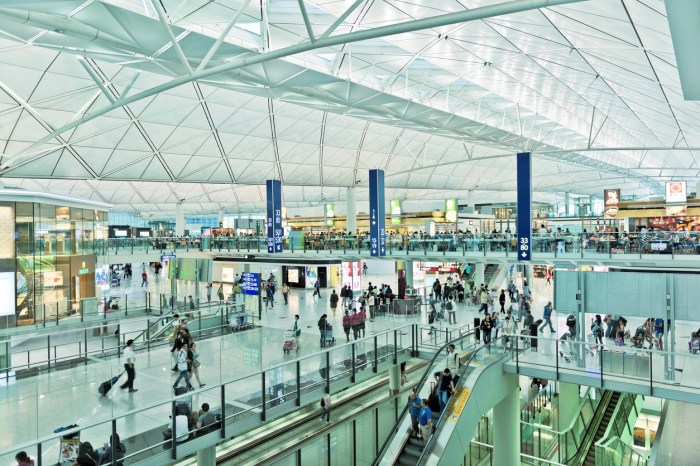
Hong Kong International Airport (HKG) is renowned for its world-class infrastructure and extensive facilities that cater to the needs of both passengers and airlines. The airport comprises two terminal buildings, Terminal 1 and Terminal 2, which are interconnected by an automated people mover system.
Terminal 1 primarily handles flights operated by Cathay Pacific and its partner airlines, while Terminal 2 serves other carriers.
Runways and Apron
HKG boasts two parallel runways, each measuring 3,800 meters (12,467 feet) in length and 60 meters (197 feet) in width. These runways are capable of accommodating the largest aircraft, including the Airbus A380 and Boeing 747. The airport also has a spacious apron area with 200 parking stands for aircraft of various sizes.
Terminal Buildings
Terminal 1 and Terminal 2 are both modern and spacious, offering a wide range of amenities and services to passengers. Terminal 1 is the older of the two and has undergone several renovations and expansions over the years. Terminal 2, on the other hand, is newer and features a more contemporary design.The following table compares the key features and capacities of HKG’s terminals:| Feature | Terminal 1 | Terminal 2 ||—|—|—|| Number of gates | 40 | 38 || Number of check-in counters | 120 | 100 || Number of baggage claim carousels | 12 | 10 || Number of shops and restaurants | 150 | 120 || Number of lounges | 10 | 8 || Passenger capacity | 45 million per year | 30 million per year |
Hong Kong Airport is a major international hub, connecting travelers to destinations worldwide. For those seeking budget-friendly accommodation near the airport, consider reddoorz semarang , offering comfortable rooms and convenient amenities. Upon returning to Hong Kong Airport, passengers can take advantage of its vast shopping and dining options while awaiting their departure.
Connectivity and Destinations
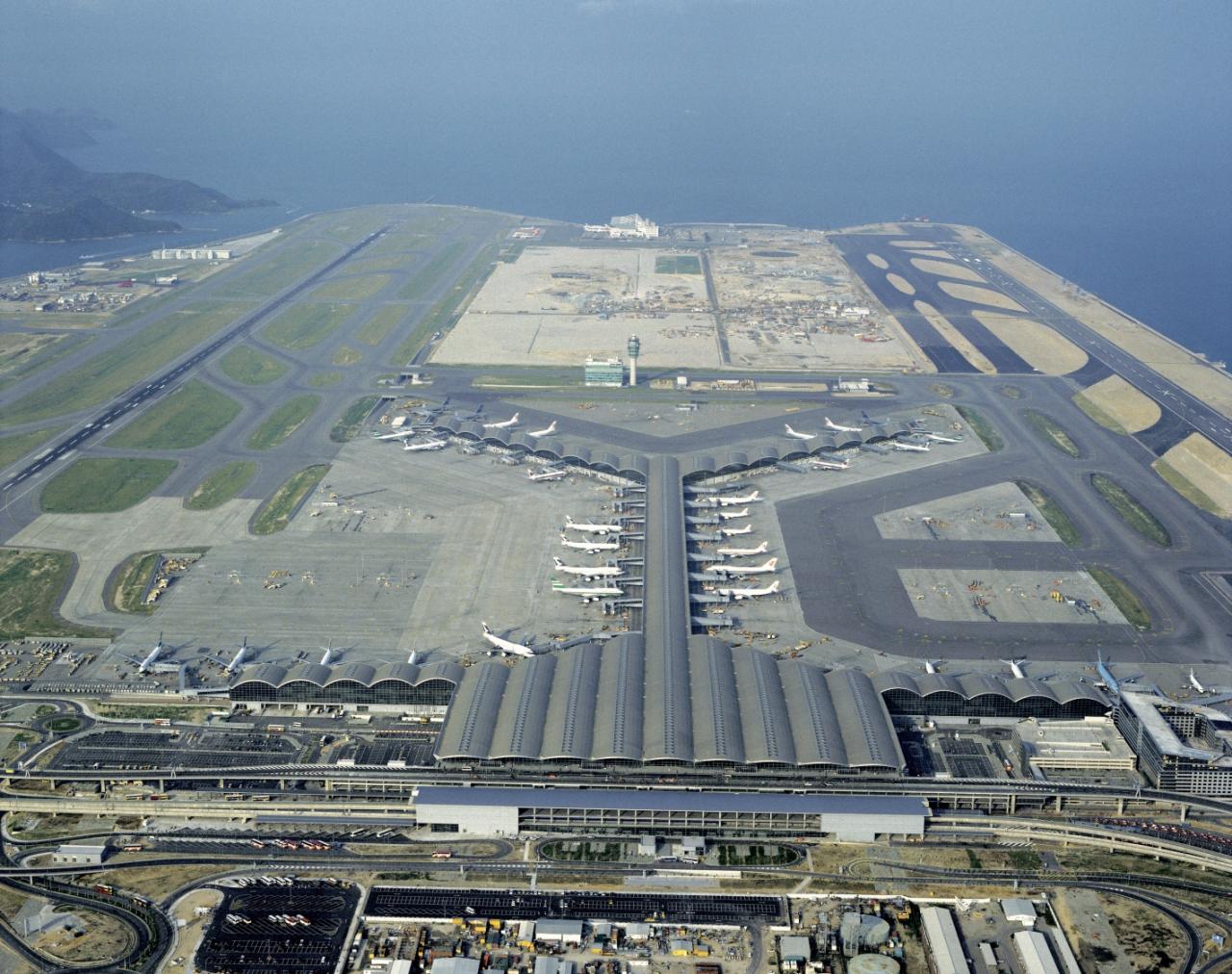
Hong Kong International Airport (HKG) is a global aviation hub connecting passengers to destinations worldwide. It serves as a gateway to Asia, facilitating trade and tourism in the region.HKG’s strategic location at the heart of East Asia contributes significantly to its connectivity.
The airport is situated on the southern coast of Hong Kong, adjacent to the Pearl River Delta, one of the world’s most economically dynamic regions. This proximity to major business and tourism destinations in mainland China, Southeast Asia, and beyond enhances HKG’s accessibility and importance as a regional and international air transportation hub.
Airlines and Destinations, Hong kong airport
HKG is served by over 120 airlines, operating flights to more than 220 destinations in over 50 countries and territories. The airport serves as a hub for Cathay Pacific, the flag carrier of Hong Kong, and is a major operating base for other regional airlines such as Hong Kong Airlines and Air Macau.
Regional and Global Impact
HKG plays a pivotal role in regional and global air travel. It serves as a key transit point for passengers traveling between Asia and Europe, North America, and other parts of the world. The airport’s extensive network of destinations and its efficient connections to major cities make it a preferred choice for business and leisure travelers alike.HKG’s connectivity and accessibility have a significant impact on the economy of Hong Kong and the wider region.
The airport generates employment opportunities, supports tourism, and facilitates trade by connecting businesses to global markets. Its role as a regional and international air transportation hub contributes to the economic prosperity and growth of Hong Kong and its neighboring areas.
Passenger Experience

Hong Kong International Airport (HKG) is renowned for its seamless and enjoyable passenger experience. The airport employs various measures to ensure convenience, efficiency, and customer satisfaction.
HKG leverages cutting-edge technology and innovation to enhance passenger convenience. Self-service kiosks enable quick check-in, baggage drop-off, and boarding pass printing. Automated border control gates expedite immigration and security checks, reducing wait times.
Customer Satisfaction Initiatives
- Personalized concierge services provide tailored assistance to passengers with special needs or preferences.
- The “HKG My Flight” mobile app offers real-time flight information, gate changes, and baggage claim updates, empowering passengers with up-to-date information.
- A dedicated team monitors passenger feedback and implements initiatives to address concerns and improve the overall experience.
Economic Impact
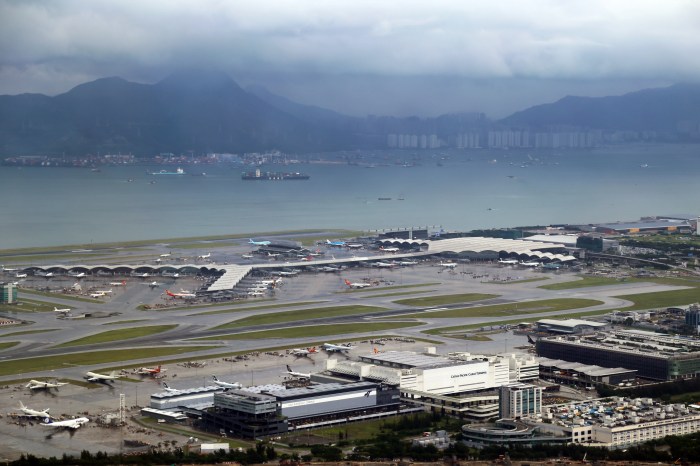
Hong Kong International Airport (HKG) is a major economic driver for Hong Kong and the wider region. The airport contributes significantly to job creation, tourism, and trade.
Hong Kong International Airport, a bustling hub for travelers worldwide, offers seamless connections to exotic destinations. Among them is the enchanting sacred monkey forest sanctuary in Bali, Indonesia. This revered sanctuary, home to hundreds of playful and mischievous macaques, provides a glimpse into the unique cultural and spiritual traditions of the region.
After immersing yourself in the tranquility of the forest, you can easily return to the hustle and bustle of Hong Kong International Airport, ready for your next adventure.
Job Creation
HKG is a major employer in Hong Kong. In 2021, the airport and its related businesses employed over 70,000 people. These jobs include a wide range of positions, from customer service and baggage handling to engineering and administration.
Tourism
HKG is a major gateway for tourists to Hong Kong. In 2019, the airport handled over 70 million passengers. These tourists contribute significantly to Hong Kong’s economy, spending money on hotels, restaurants, and attractions.
Trade
HKG is a major hub for international trade. The airport handles over 5 million tons of cargo annually. This cargo includes a wide range of goods, from electronics and clothing to food and medicine.
Contribution to Hong Kong’s GDP
HKG contributes significantly to Hong Kong’s GDP. In 2021, the airport and its related businesses contributed over HK$200 billion (US$25.5 billion) to the city’s economy. This represents approximately 5% of Hong Kong’s GDP.
Contribution to Employment
HKG is a major employer in Hong Kong. In 2021, the airport and its related businesses employed over 70,000 people. This represents approximately 3% of Hong Kong’s total workforce.
Hong Kong Airport, a bustling hub of international travel, stands as a testament to the city’s global connections. Its towering skyscrapers and efficient terminals rival the grandeur of iconic landmarks like the statue of liberty , symbolizing freedom and opportunity.
As you traverse the airport’s vast concourses, you’ll find yourself transported to destinations far and wide, a testament to Hong Kong’s status as a gateway to the world.
Sustainability and Environmental Initiatives: Hong Kong Airport
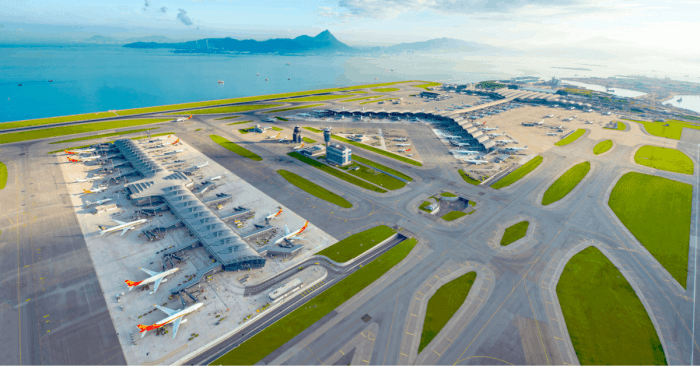
Hong Kong International Airport (HKIA) is committed to sustainability and environmental protection. It has implemented various measures to reduce its carbon emissions, waste, and noise pollution.
HKIA has set ambitious long-term sustainability goals. It aims to become a zero-carbon airport by 2050. To achieve this, it is investing in renewable energy sources, such as solar and wind power, and implementing energy-efficient measures throughout its operations.
Waste Reduction
HKIA has implemented a comprehensive waste management program to reduce its waste footprint. The program includes waste sorting, recycling, and composting. The airport also works with its partners to reduce packaging and promote sustainable practices throughout its supply chain.
Noise Pollution
HKIA has implemented a number of measures to reduce noise pollution. These measures include the use of quieter aircraft, the installation of noise barriers, and the development of noise-reducing operating procedures.
Future Developments and Outlook

Hong Kong International Airport (HKG) is continuously evolving to meet the demands of the aviation industry and maintain its position as a leading aviation hub in the Asia-Pacific region. The airport has ambitious plans for future developments and expansions, leveraging emerging trends and technologies to enhance the passenger experience and support sustainable growth.
Expansion and Infrastructure Enhancements
- Third Runway: HKG is constructing a third runway, scheduled to open in 2024. This expansion will increase the airport’s capacity and reduce congestion, allowing for more flight movements and accommodating future growth in air traffic.
- Terminal Expansion: The airport is expanding its terminal facilities to accommodate the increasing number of passengers. Terminal 2 will undergo a major renovation, while Terminal 1 will be extended to provide additional space for retail, dining, and other amenities.
- Automated People Mover: An automated people mover system is being implemented to connect the airport’s terminals and other facilities, improving passenger convenience and reducing walking distances.
Technology and Innovation
- Biometric Technology: HKG is implementing biometric technology to streamline passenger processing and enhance security. Passengers will be able to use facial recognition and other biometric identifiers to check in, board flights, and access airport facilities.
- Smart Airport Initiatives: The airport is embracing smart airport initiatives to improve operational efficiency and enhance the passenger experience. These initiatives include automated baggage handling, real-time flight information updates, and personalized navigation.
- Artificial Intelligence (AI): AI is being used to analyze passenger data and optimize airport operations. AI-powered systems can predict passenger flows, identify potential delays, and provide personalized recommendations to improve the overall travel experience.
Sustainability and Environmental Initiatives
- Carbon Neutrality: HKG has set a goal to achieve carbon neutrality by 2050. The airport is implementing various measures to reduce its carbon footprint, including the use of renewable energy, energy-efficient technologies, and sustainable building practices.
- Waste Management: The airport has implemented a comprehensive waste management program to reduce waste and promote recycling. HKG aims to achieve zero waste to landfill by 2035.
- Biodiversity Conservation: The airport is committed to protecting the local environment and biodiversity. It has established a nature reserve on the airport grounds and is working to minimize the impact of its operations on wildlife.
Outcome Summary
As HKG continues to evolve and expand, it is poised to maintain its position as a leading aviation hub in the years to come. With its unwavering focus on connectivity, innovation, and sustainability, HKG is well-equipped to meet the ever-changing demands of global air travel and contribute to the prosperity of Hong Kong and the wider region.
Answers to Common Questions
What is Hong Kong International Airport’s IATA code?
HKG
How many terminals does Hong Kong International Airport have?
Three
What is the largest airline operating at Hong Kong International Airport?
Cathay Pacific
Is there a direct train connection between Hong Kong International Airport and downtown Hong Kong?
Yes, the Airport Express train